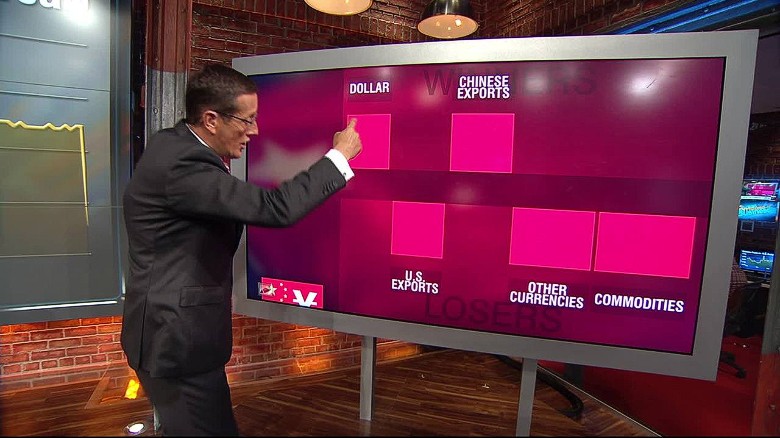Global selloff continues after US labels China a currency manipulator

Stocks in Asia were down across the board Tuesday as the US-China trade war reached a fever pitch. Hong Kong’s Hang Seng Index (HSI), Japan’s Nikkei, mainland China’s Shanghai Composite Index (SHCOMP) and Taiwan’s Taiex all fell more than 2% in early trading.The heavy losses were triggered Monday after the Chinese government let the yuan fall below its 7-to-1 ratio with the US dollar for the first time in a decade. Global stocks fell on that move, including US markets, which suffered some of their biggest drops of the year. The Trump administration later labeled China a “currency manipulator.”The yuan remained volatile on Tuesday after the People’s Bank of China fixed the currency at its weakest level in 11 years. The central bank’s cut to the yuan’s reference rate — a “band” it sets every day to curb how far up or down the yuan’s value can move — was also the deepest in more than a year.The yuan’s daily reference rate Tuesday of roughly 6.97 to the US dollar is the currency’s lowest since May 2008, during the global financial crisis. The central bank’s reference rate did not breach the critical 7-per-dollar level, which is closely watched by global traders.But in mainland China on Tuesday, the yuan changes hands at about 7.06 to the dollar. Outside of China, where the yuan trades more freely, one dollar buys about 7.09 yuan.”Today’s fixing is an even bigger depreciation move,” said Robert Carnell, chief economist and head of research in Asia Pacific at ING.”We now have to wait to see how the US President views today’s move, as it looks like he is personally taking control of US trade policy,” Carnell added, speaking about US President Donald Trump. He said the United States could respond by increasing the 10% tariff that Trump recently announced on $300 billion worth of Chinese goods to 25% — a further escalation of an already intense trade war.Analysts also fear the United States and China may be headed for a currency war. “Continued yuan depreciation should be expected, albeit in a staggered pace. Beijing is likely to tolerate further weakness and we could see another 5% before the end of the year,” said Edward Moya, New York-based senior market analyst at Oanda. “The US is likely to counter the breach of the critical 7 level to the dollar with verbal intervention. Currency wars are taking center stage. “Here are some of the other big moves on Asian markets at 11:30 a.m. Hong Kong time.The Hang Seng fell 1.4%. The index has wiped out all of this year’s gains and is down 0.2% year-to-date. Sunny Optical Technology and AAC Technologies, which supply components to Chinese telecoms giant Huawei, sank 5.1% each. They were the biggest losers on the Hang Seng.Mainland China’s benchmark Shanghai Composite Index (SHCOMP) lost 2.4%. Japan’s Nikkei fell 2%. South Korea’s Kospi (KOSPI) fell 0.5%. Australia’s S&P/ASX 200 dropped 2.2%. Taiwan’s Taiex lost 0.3%. US stocks futures tumbled, suggesting Wall Street is poised to suffer another day of declines. Dow futures were down 248 points, or 1%. S&P 500 futures and Nasdaq futures also both tumbled 1%. HSBC (HBCYF) shares that are listed in Hong Kong continued their decline, down 2.5% on Tuesday morning. The British banking giant dropped 1.9% on Monday after it announced John Flint will step down as chief executive.







